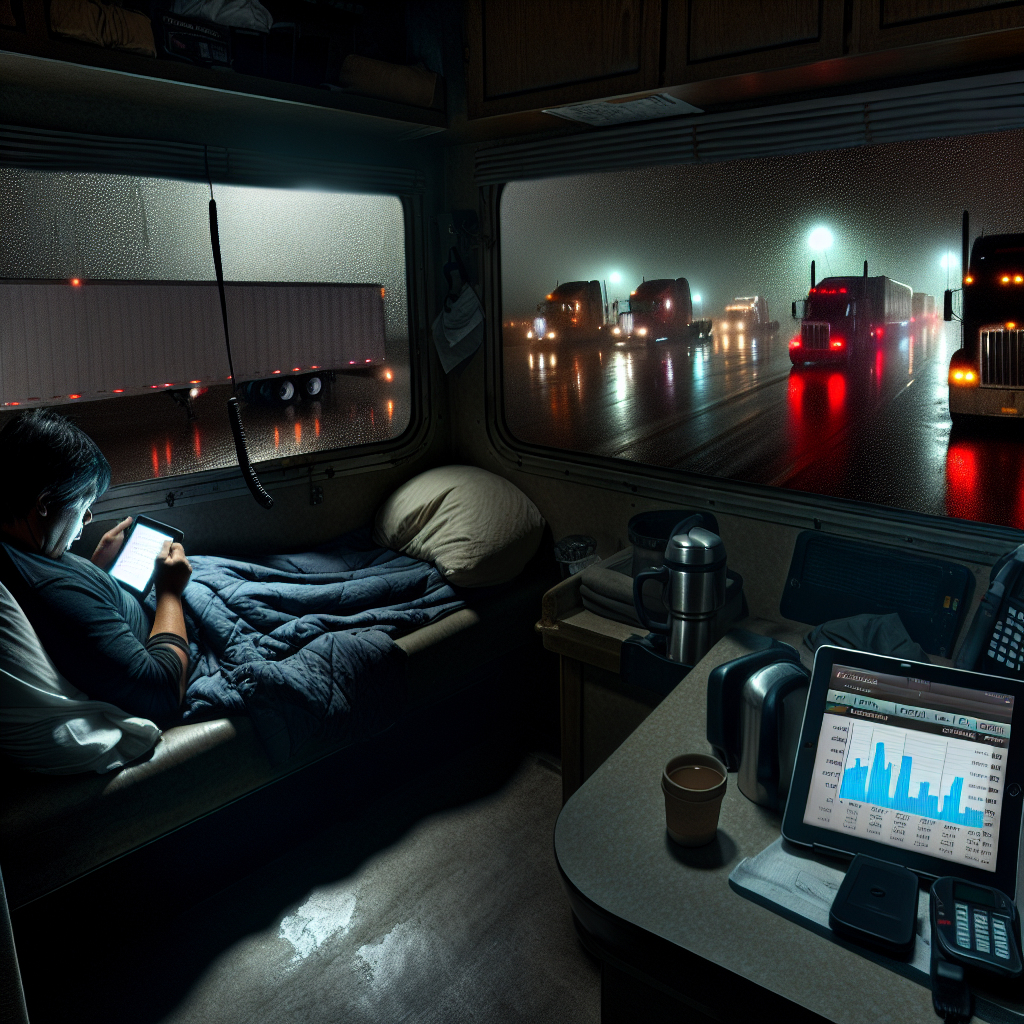Federal regulators are preparing a closely watched experiment to test whether more flexible split-sleeper options can improve safety and productivity. But among drivers and safety advocates, a louder question is gaining traction: will added flexibility become another lever for dispatch pressure? FreightWaves’ reporting underscores a rising fear that a well-intentioned pilot could morph into a scheduling tool that nudges drivers to sleep when it suits freight — not fatigue science or the individual behind the wheel.
Why the anxiety now? A big piece is how technology has evolved since the last major hours-of-service overhaul. Modern ELD platforms don’t just passively capture duty status; they increasingly give fleets administrative switches that can set the rules drivers live by in real time. For example, Motive’s latest support guidance shows fleet managers can enable or disable sleeper-berth status at the vehicle level — even in bulk — and drivers then see split-sleeper “clocks” recalculated inside their apps. That kind of centralized control can streamline compliance, but it also concentrates power to shape a driver’s rest choices during a pilot meant to test driver-led flexibility.
On the driver side of the glass, the same Motive updates highlight how app interfaces encourage using split-sleeper options: toggles expose “Show Split SB Clocks,” letting drivers visualize regained hours before both qualifying off-duty periods are complete. Motive also notes that “violations” appearing mid-split may clear once the second qualifying rest is taken — and that in DOT Inspection Mode those flags aren’t presented to officers. That can reduce friction at the roadside, but it may also fuel tacit expectations to keep rolling because “the clock says you can.” For drivers wary of dispatch pressure, the line between a helpful planning tool and a productivity nudge can feel thin.
Even small movements can complicate fatigue protection. Geotab’s newly updated guidance describes a scenario in which a driver in a split sleeper is forced to reposition using personal conveyance; with local FMCSA field-office advice, that brief move can be “ignored” in the availability calculator so it doesn’t break the qualifying rest. That nuance is meant to avoid penalizing a driver who’s ordered to move, but it also illustrates how many interpretations — by fleets, vendors and enforcement — will intersect once a pilot takes live-data measurements of rest, alertness and on-duty behavior. Inconsistent handling of those edge cases is exactly where drivers fear leverage can creep in.
For fleets, the upside of a well-run test is meaningful. Split options that better mirror real-world delays could help drivers avoid rush hours, wait out weather, or find safe parking — without burning the 14-hour window. But for the pilot to generate credible results, participants will need guardrails that keep the “flex” in the driver’s hands. That means: written policies barring dispatch from mandating split use; auditable logs showing who flipped which ELD settings and when; and clear, timely guidance to roadside officers so legitimate splits aren’t second-guessed during inspections. It also means technology vendors documenting how their dashboards calculate split availability and what an officer will (and won’t) see at the roadside — details that already vary across systems, as recent support bulletins make clear.
What to watch next for carriers and owner-operators: whether pilot protocols explicitly prohibit management from requiring a 5/5 or 6/4 split on a given run; how ELD providers surface driver-level consent and preserve an immutable trail of admin edits; and whether the agency standardizes handling of unavoidable, short “safe haven” moves so split rest isn’t unintentionally invalidated. The market has the tools to make flexibility work; the test is whether policy and product design keep drivers from feeling like that flexibility works on them.
Sources: FreightWaves, Motive Help Center, Geotab Support
This article was prepared exclusively for TruckStopInsider.com. Republishing is permitted only with proper credit and a link back to the original source.




